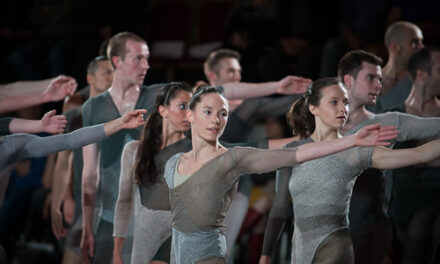Music lovers in the Triad and Triangle ought not overlook the enterprising programs nearby on the Elon University campus. Parent’s weekend events led to the unusual time of 8:30 p.m. for an unusually well planned program of the piano music of Béla Bartók, presented on September 20 in the jewel-like restored Whitley Auditorium. Regulars will know that the expected benefit of this ought to have been missing the scheduled train – the hall faces the railroad tracks – but, as it happened, a late freight interfered anyway…. The title of the program was “Evening in the Country,” focusing upon the folk influences in the music of Bartók. Besides being a broad chronological survey of the composer’s music, the concert was also a CD release party for a fuller recording of the program’s items. The recording of the same title is the third release for Elon Improvibes, the University’s recording label, which heavily involves students in all aspects of production. It is a joint project of the Elon Enterprise Academy and the Martha & Spencer Love School of Business with faculty direction from Barth Strempek. Another CVNC critic will review the CD in the near future.
Soloist Victoria Fischer has written about Bartók’s music for a number of publications. She is the author of Chapter 6, titled “Piano music: teaching pieces and folksong arrangements,” in the useful Cambridge Companion to Bartók , which contribution happens to relate to the music played on this intermission-less program. A completely uncharacteristic piece, the Second Fantasy, from Four Piano Pieces (1904), opened the program. It is brooding and romantic and thus more reflective of the composer’s then-hero, Liszt, than what was later to come from one of the giants of the twentieth century. Fischer produced a rich dark tone from the wonderfully restored 1923 Steinway D grand piano. Perhaps soft tapestries or curtains could tame the hall’s lively acoustics, resulting from its many hard surfaces. Between pieces, Fischer commented on the music, pointing out key changes and other matters of interest. Bartók had grown up entirely within an urban environment and had been familiar with the neo-Hungarian tradition of Liszt and Erkel only; the former molded his ideas about the Germanic style, and the other brought in his interest in the Italianate. During a trip to the country, his chance overhearing of a girl singing a genuine folk song proved to be pivotal to his future development. His folk song collections, started in 1905, soon began to be directly and indirectly incorporated into his style.
From Ten Easy Pieces (1908), Fischer played the oft’-programmed “Evening in the Country.” The variety of color evoked and her skill at dealing with the abrupt tempo changes revealed her mastery of Bartók’s style. This selection alternated “two pentatonic tunes, one parlando, the other a sprightly ‘tempo giusto’ tune, to arrive at a rondo-like form.” From Fourteen Bagatelles , Op. 6 (1908), which she described as “wild and experimental,” she selected eight pieces. Only No. 4, marked Grave, was an arrangement of a real folksong, collected in Felsõiregh, Tolna. Halsey Stevens, writing in The Life and Music of Béla Bartók (from which I have shamelessly cribbed), states that the composer “harmonized the tune in alternating lines, first in triads (Aeolian mode), then with added notes forming seventh chords.” No. 12, marked Rubato, uses a vibrating, repeated “A” to convey the sound of a cimbalom. Stevens writes that it “gives the impression of Schoenberg’s early piano pieces (which were published later) [and that] this one’s “motivic patterns are close to those of the Viennese composer’s Op. 11, No. 1.” Fischer explained that the last two of the set are autobiographical, associated with a woman violinist who spurned his love. (Could No. 13, subtitled “Elle est morte,” which wasn’t played, be considered musical sexual harassment?) The last, No. 14, marked Presto and subtitled “My dancing sweetheart,” emerged as a sardonic caricature. Fischer described it as “unflattering,” and Stevens draws a parallel with the impulses that drove Berlioz in his Symphonie fantastique.
The Fifteen Hungarian Peasant Songs (1914-1918) were played in their entirety. All the melodies were authentic while the accompaniments reflect Bartók’s synthesis from folk styles. The last, marked Allegro, conjures up the sound of bagpipes.
The concert ended with the Petite Suite (1936), a transcription of six selections from the colorful Forty-Four Duos for Violins . Most remarkable was No. 4, “Pengetos” (Quasi Pizzicato), in which Bartók managed to suggest violin pizzicatos on the piano, a percussion instrument!
This well-planned chronological sequence of pieces revealed how the discovery of his own county’s native musics led to the development of much of Bartók’s style. This was a major advance over the nineteenth century’s mistaken preoccupation with “Gypsy” music as Hungary’s native music and was an important facet of the rise of Nationalism in Music.
After the concert Fischer greeted many well-wishers and there were brisk sales of the Elon-produced CD of the full program “Evening in the Country.” For more information about this recording, see http://www.elonimprovibes.com/ [inactive 9/09].











